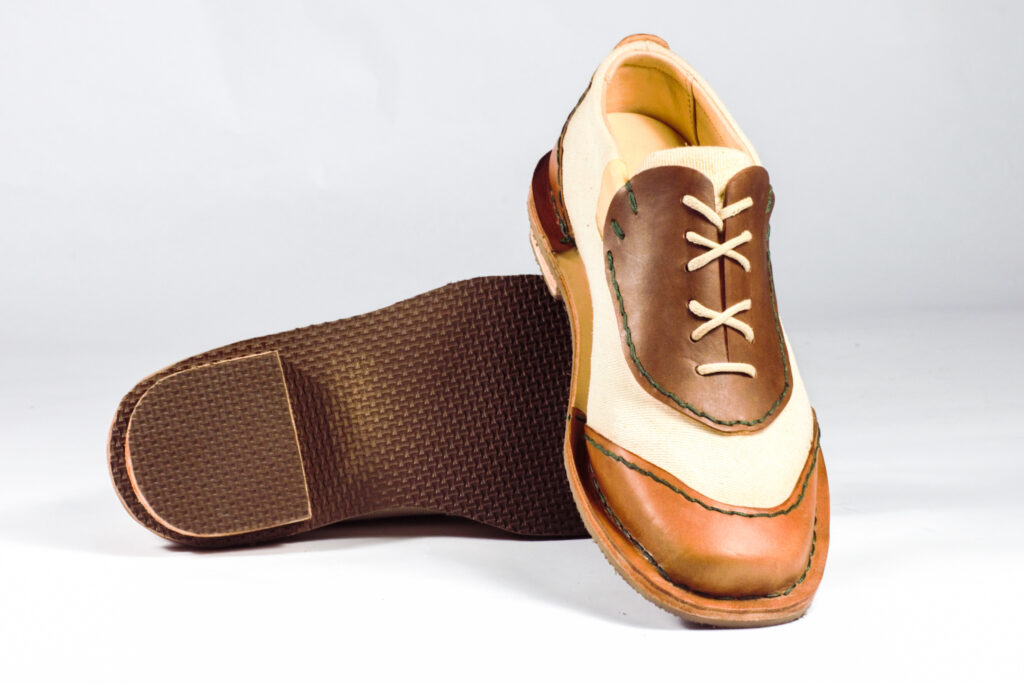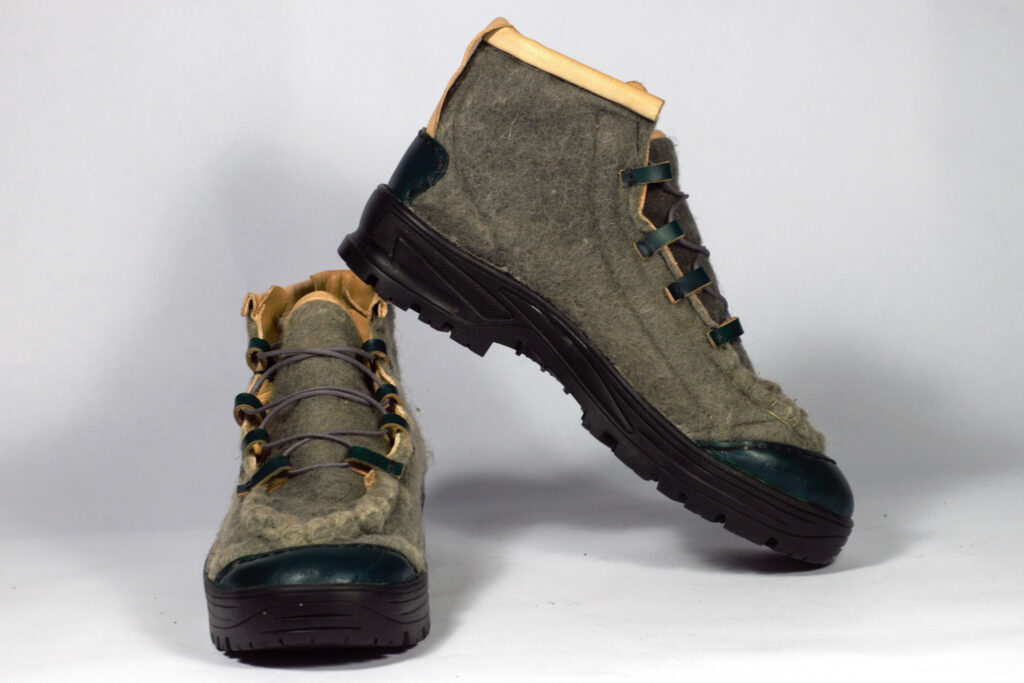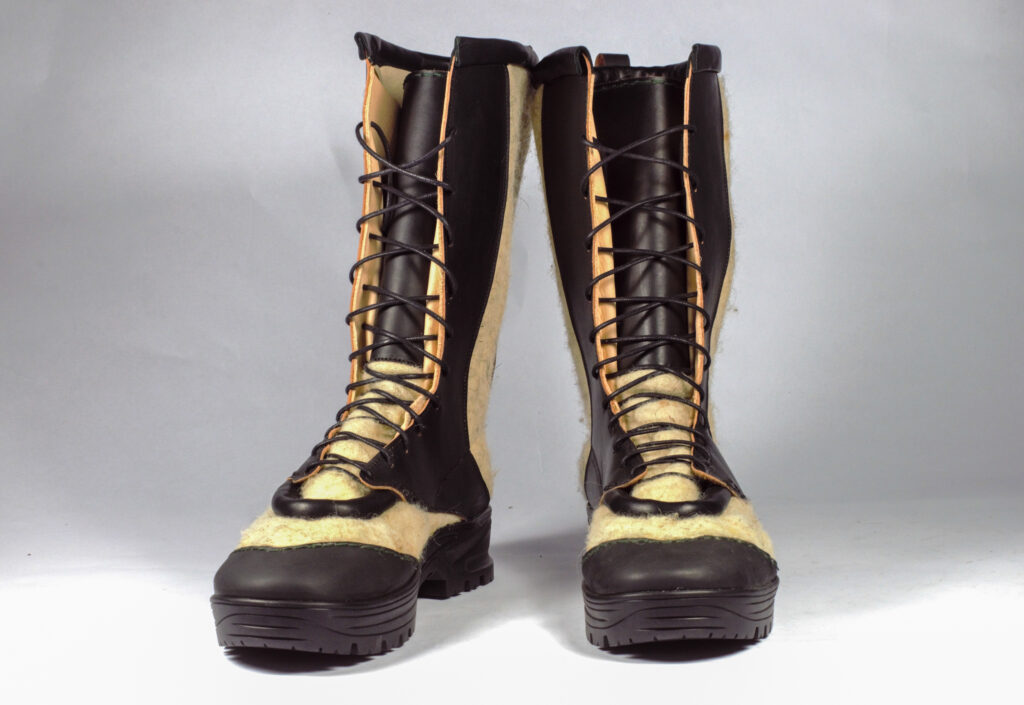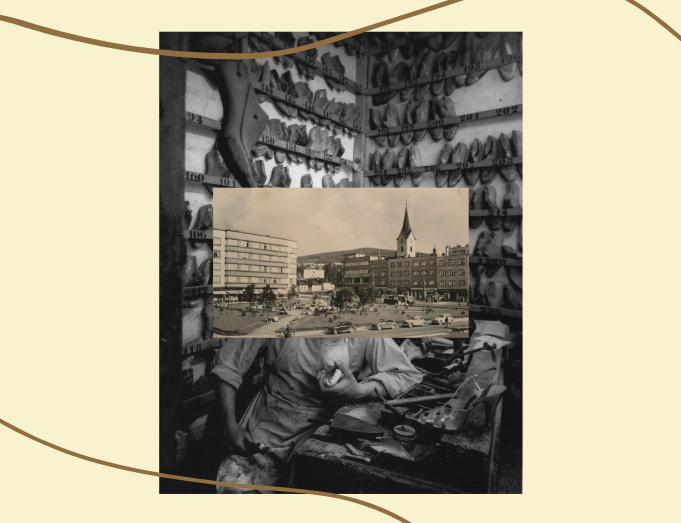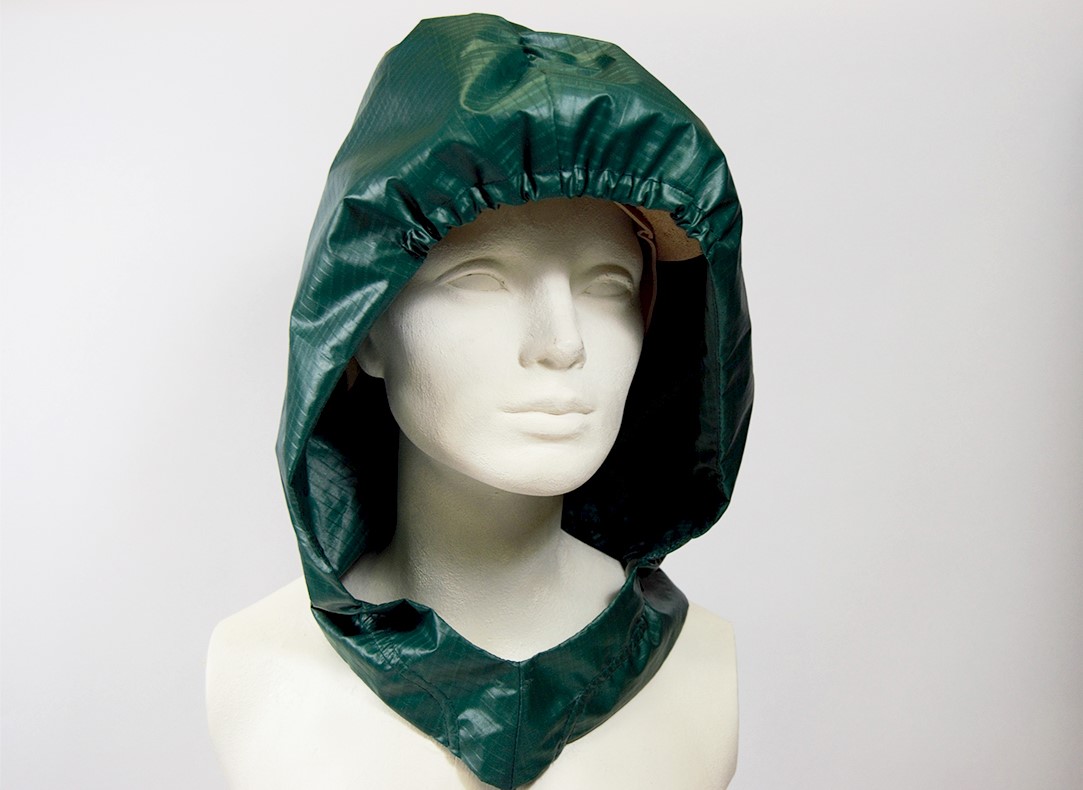The thesis focuses on the history of non-Baťa shoemaking production in Zlín and its surroundings from the late 19th century to the 1930s. It explores the shoemaking craft, local businesses, and their key figures who operated alongside the Baťa company. The research draws from scholarly literature, archival sources, and period press, mapping both manufacturing structures and typical regional products.
The footwear collection is based on the principles of sustainability, respect for traditional craftsmanship, and a return to local resources. It draws inspiration from historical patterns and techniques, which have been transformed into a design reflecting contemporary ecological challenges and the pace of the 21st century. The project seeks to revive the approaches of our ancestors, who managed materials carefully, without waste, and with respect for natural resources. The collection serves as a model demonstration of the potential for reviving small-scale production using local materials—such as wool, vegetable-tanned leather, and textiles—and traditional techniques including hand-stitching, felt-making, and upper shaping. These methods are not only functional but also aesthetically valuable. The author aims to explore whether high-quality craftsmanship can be practically combined with sustainability principles. The creation process thus became a personal reflection on the demanding nature of the craft and a humble approach to shoemaking as a discipline.
The collection is divided into two lines – urban footwear inspired by séglovky and hiking footwear made of wool felt, typical for the mountainous areas of the region. The overall concept is rooted in respect for traditional craftsmanship and its contemporary reinterpretation, as reflected in the inspirational collage featuring motifs of a shoemaker’s workshop, regional identity, and the symbolism of a never-ending thread.
